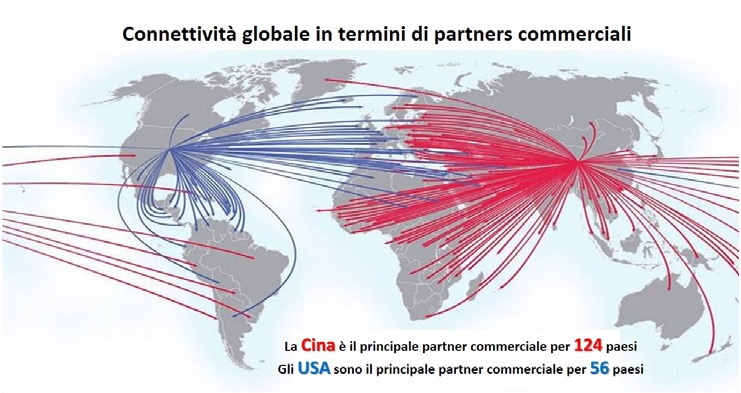Peace connectivity
Publish date 22-12-2022
Wisdom is focusing on what unites peoples and not on what divides them

Opus justitiae pax: the effect of justice will be peace, the fruit of law and perennial security". 750 years before Christ, 2,700 years before the Charter of the United Nations and the first Catholic encyclical on peace, the prophet Isaiah foresaw the crux of the matter in three words: peace comes from justice, law and security (cf. Is 32, 17).
It is obvious that to build justice you need to know your neighbor near and far. After all, our life is nothing but the art of mutual knowledge and encounter. Encounter is, so to speak, the lifeblood of humanity. But it cannot be a violent or fearful encounter. This is why Western democracies want and seek a "global order based on rules"; the Chinese and many other Asian peoples instead define it as a "community of common destiny". Realizing that they are two sides of the same coin and that both rules and destiny must be designed and done together it's just a matter of time.
To accelerate and facilitate this mutual understanding between the West and the East of the world, Parag Khanna suggests giving less importance to geography (maps and rights of states and borders) and more importance to cultural, commercial and social connectivity. In practice it is a question of studying and maximizing what unites peoples rather than their divisions. The big cities of the world are doing it by exchanging hundreds of experiences and best practices regardless of borders. The connectivity business could soon exceed the gross domestic product (GDP) of many countries.
The name and borders of nations change through the centuries. But the engines of prosperity remain cities, not a few of which have thousands of years of history and growth experiences. According to the 2018 United Nations World Urbanization Prospect, 55% of the world's population today lives in urban areas. This is projected to increase to 68% by 2050. By 2030, the UN predicts the world will have more than 40 megacities with over 10 million inhabitants and shared infrastructure. For example, the largest megacity in the world is located in Japan, from Tokyo to Nagoya to Osaka with more than 80 million people and represents the majority of the Japanese economy and therefore one of the major economies in the world. Some of the new megacities have GDP approaching two trillion dollars, larger than that of some large nations. In China, Jingjinji Metropolitan Region or Jing-Jin-Ji (JJJ), also known as Beijing-Tianjin-Hebei is the largest urbanized megacity region in North China. In 2020, Jingjinji had a total population of 110 million people. To allow the mobility of people and goods JJJ has eight airports. The best defense and peace policy in the coming decades will be connectivity.
Sandro Calvani
NP Ottobre 2022







